Cultural Centre PV

|
The Cultural Centre, Port Vila
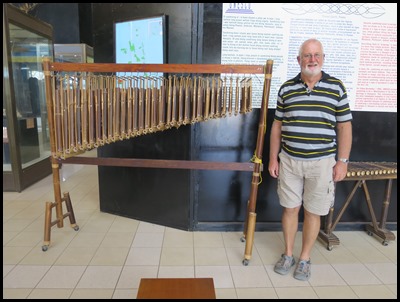 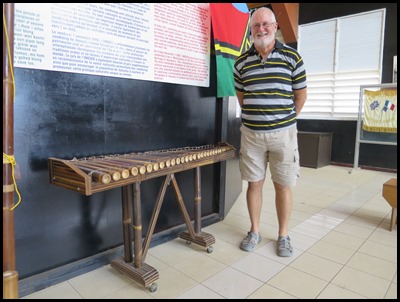 We paid our five pounds admission fee
– no guide – as we thought it would be nice to bimble at our own pace. We began
at these unexpected instruments. Bear stayed
downstairs to look at the Lapita pottery, I went up with the thought of working
back to front. When we walked through the door the museum initially looked quite
small, but it seemed to grow in size......
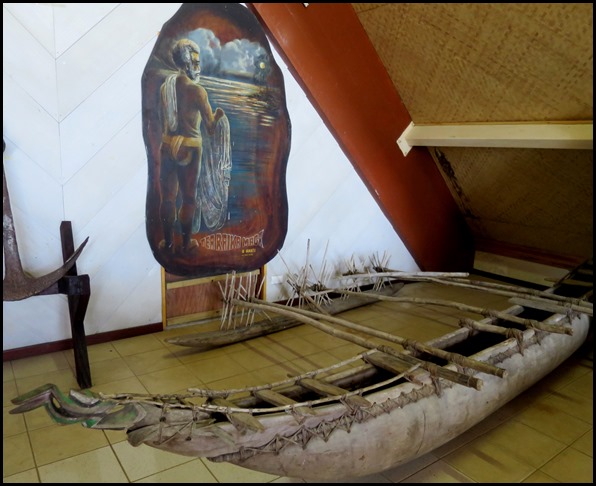 The smallish area upstairs was
dominated by this canoe and I loved the picture on the wall – showing how the people of Vanuatu
live so close to the sea in every sense of the word.
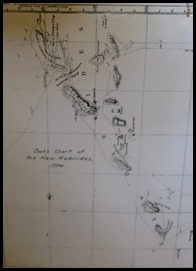 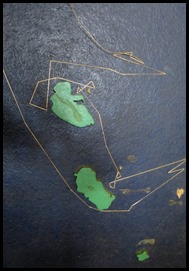 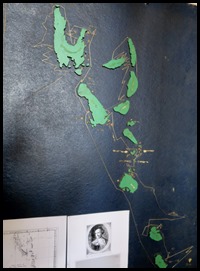 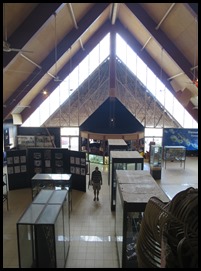 Upstairs I found a copy of the original map Captain James Cook produced in 1774 of the New Hebrides – his name for the islands. Captain Cook visited the islands on his second voyage and HMS Resolution was a favourite of his, the first ship to cross the Antarctic Circle – three times in that voyage – Resolution impressed him enough that he called her "the ship of my choice", and "the fittest for service of any I have seen," he named a port on the east coast of Tanna after her and a must visit for us. An interesting map showing Cook’s journey around the islands and then I looked down to see Bear and get a picture of the museum from up here. 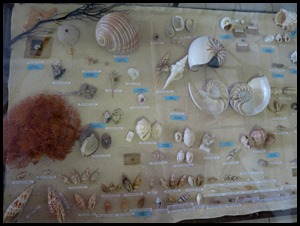 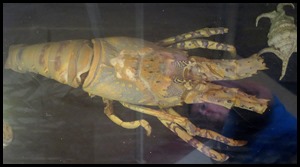 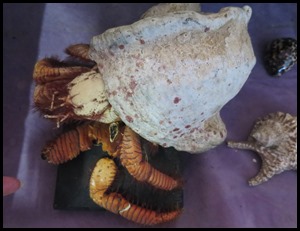 I enjoyed looking at a variety of shells, a beast of a lobster and a massive Hermy who
dwarfed my finger – just seen in the bottom left corner. How I would love to
meet a chap of these proportions. I’m not holding
him for you. It’s not for me it for our faithful blog readers and
they demand the best from you. Huh.
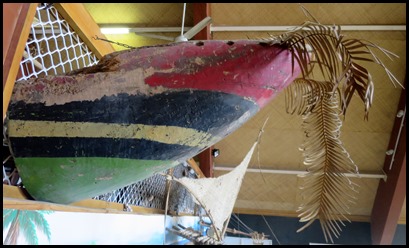 On my way downstairs I stopped to
admire a canoe prow, called a solub in the language
of Atchin Island of northeast Malekula. Canoe prows are used to indicate the
rank of the owner in the ‘namangi’ graded social system. These solub are said to
be stylised frigate birds and are believed to lead the canoe on its journey.
There are many different styles of solub, some have additional carvings showing
pigs or flying fish and can still be found today on Malekula
Island.
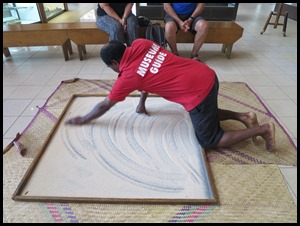 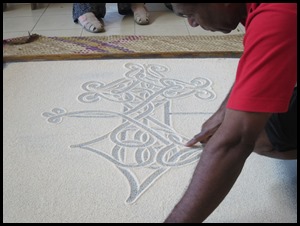 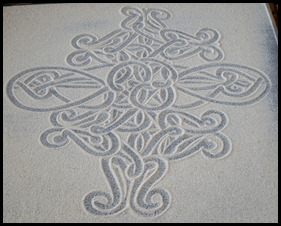 No sooner than I had rejoined Bear
than Edgar, a museum guide scooped us up, along with another couple. We sat and
after a traditional ‘welcome’ were treated to a sand drawing
demonstration. Edgar said he was a teacher of the art and after drawing a
simple grid proceeded to draw in one single motion until a beautiful design
appeared. He chatted throughout his drawing and told us this was time that the
youngsters heard all the custom stories of their ancestors and learned
their lessons.
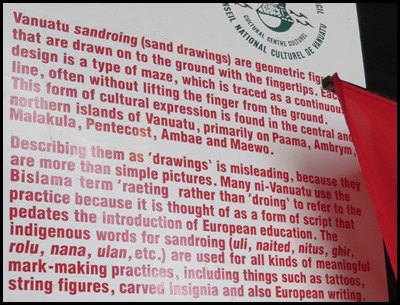 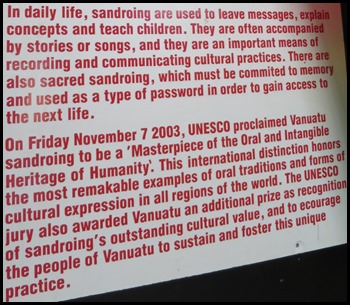 I liked this so much I left it, rather than typing out the
information.
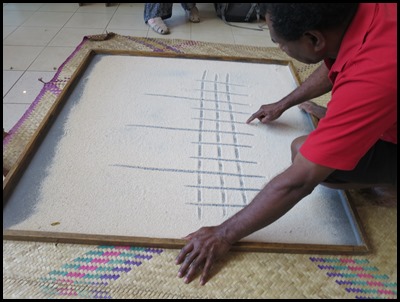  Then he showed us one of the big ocean going canoes. It is thought the first people to
reach Vanuatu were the Lapita from Papua New Guinea, who arrived in about 2000
BC. Clan-based villages separated by mountains and forests meant that many
different languages [more than one hundred and fifteen distinctly different] and
dialects came into being. To this day some eighty per cent of people live in
rural areas in tribes of fifty or less headed by a chief whose word is law and
it is he that speaks for and represents the village. Any judicial matters are
dealt with by the chief and very seldom are the Police called in and only then
by the offended party, if they feel justice was not served by the chief. Most
tribes have a traditional nakamal [village clubhouse or clan hut] where men
gather to talk, manage village affairs and drink kava. Many village traditions,
ceremonies and rites of passage have remained untouched. The first European
explorers arrived in 1606 as part of a Spanish expedition headed by Pedro
Fernandez de Quiros. Captain Cook named this island of Efate, Sandwich Island
after his benefactor, the Earl of Sandwich.
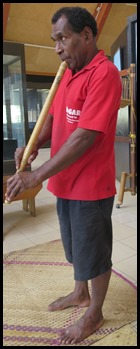 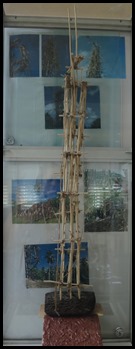 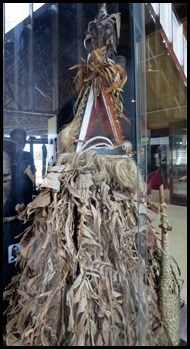 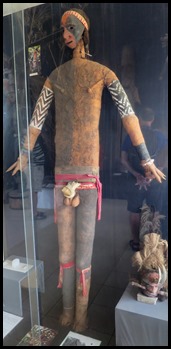 Edgar played us tune on a recorder-like instrument and part of the National Anthem
on a strange xylophone-come-rattle arrangement then took us to the model of the land-diving ceremony. [When asked Edgar told
us he had never gone off the top as his spirits were never of the mind to do so,
don’t blame him one tiny jot]. The men of
Pentecost Island – Edgar’s original homeland, celebrate the harvest of the yam
from April to June. Each man chooses his own vine, a vine tying man is in charge
of the tethering and if the person has had no sex for three weeks, impure
thoughts or participated in any dodgy activity and feels his spirit is OK to do
so, he hurls himself in a latter day bungee jump, this is to ensure a good
harvest for the following year.
Edgar went through many of the
ceremonies of cultural life – kastoms, many seem very odd, alarming or just
plain scary to us the listener. The gentle ‘hello’ each guest received and the
very hushed voice used to tell the person, after they had enjoyed a tasty
supper, that they would feel a tiny nip – that would be the poison dart or arrow
that would render them helpless in moments. Cannibalism was stopped by the
protestant missionaries............. but we have heard it carried on in the
remote islands for many years. Many ceremonies involve the wearing of huge,
elaborate headdresses. Rampramp is one of the
funerary practises still carried out on Malekula and covered next. Edgar took us
to see the Roi Mata display, the Lapita pottery, tamtams and the huge maps
painted on the wall. He told us so much about the islands but in reality, one
would guess, barely scratched the surface. Off we bimbled then on our
own.
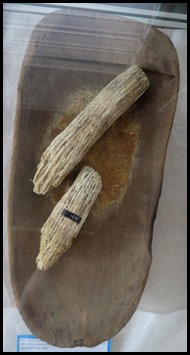 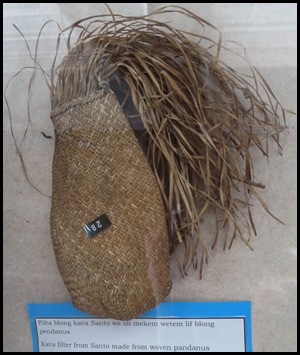 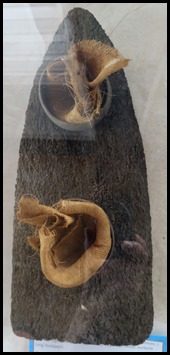 Kava. The
kava plant occupies a central place within the many islands of Vanuatu. The
cultivation, preparation and rituals of kava vary from island to island. But, in
general, the symbolic role of kava has always been ceremonial. In the olden days
it was only drunk by chiefs and man folk. It was a secret and respected drink.
The juice is extracted and prepared by chewing, crushing or grating. We looked
at some of the paraphernalia and were warned that
Fijian kava has the effect of car park puddle water compared to the stuff
produced here. Most people can manage two coconut shells full, eight can render
unconsciousness. We look forward to the taste test when we get to Tanna and Bear
dresses in tribal attire, well let’s face it , that won’t take long. Huh.
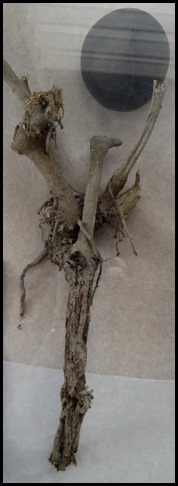 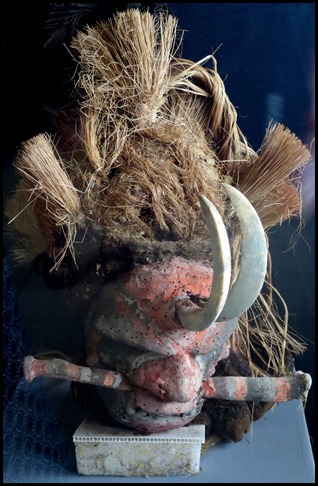 Too much of
the first probably produces the second.
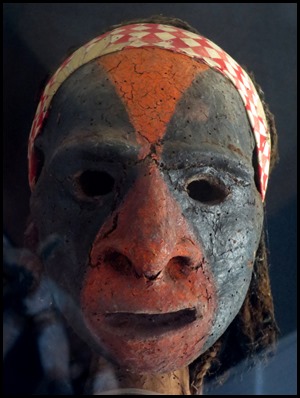 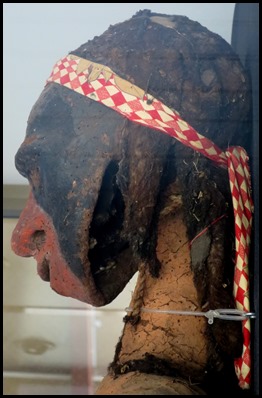 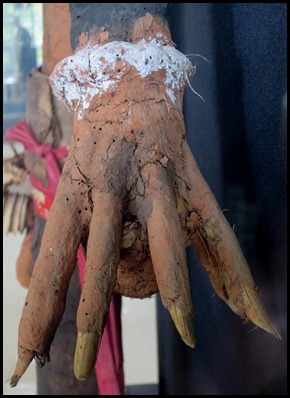 Rampramp.
Londomboi, South central Malekula Island. Rampramp is an effigy of a dead man.
It represents the deceased and the head of the rampramp is a real skull. They
believe that if they do this for a deceased relative, they are doing good things
to him. He helped them when he was alive and this is their way of thanking him.
KamanalsoaMalon made this rampramp for his dead brother in 1970.
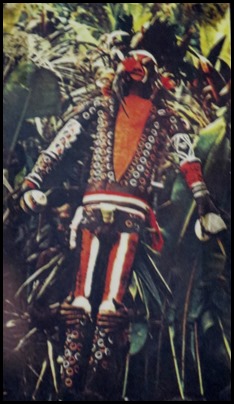 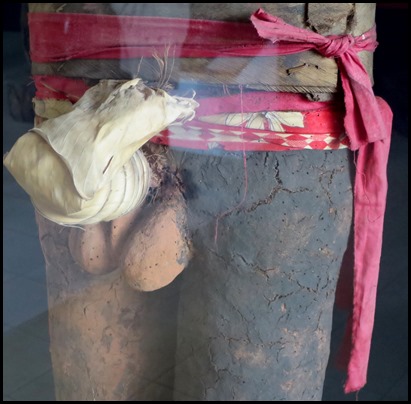 Funerary rituals among
the Mbogote, south central Malekula Island. Of all non-Christians left in the
New Hebrides it is the natives of Malekula who have retained to the highest
extent their traditional way of life. The importance of sprits of deceased
ancestors has not been mitigated by extensive contact with ‘the white man’ or
Christianised-natives. Proper performance of funerary rites is essential to
propitiate the spirits and to assure help on growing abundant crops of yams and
taro, healthy tusker pigs and freedom from disease. The
design on the effigy reveals the dead tribesman’s rank in the nimangi.
Every part of the body was represented on the
effigy........
The traditional burial form for high chiefs (natimarid) on Aneityum was for the body to be buried beneath the house-floor with the head exposed. When able to be removed, the head was taken to a sacred spot and venerated. The chief’s principal wife was strangled to accompany her husband in the afterlife (Miller 1975: 146). Commoners were disposed of at sea. On Erromango cave burials were common. 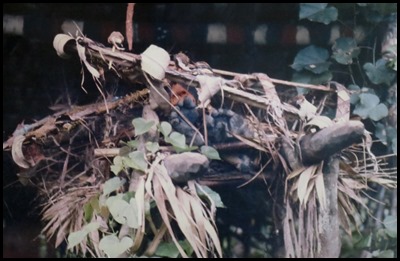 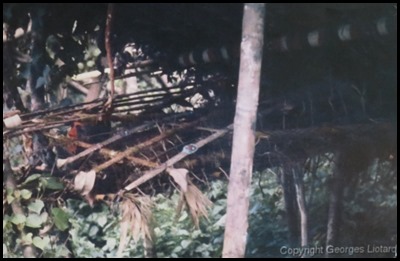 It is thanks to Georges Liotard that
we could see pictures of a body laid out on a decorated
frame.
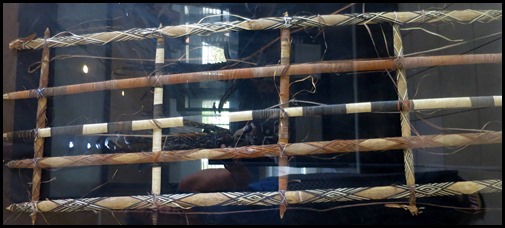 The frame a body
is carried on, simple but quite lovely. The people of Lewus, south and
central Malekula perform a funeral dance with a bow in their hands which is then
placed on the body between day one to day ten after death.
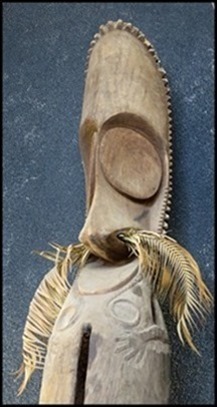 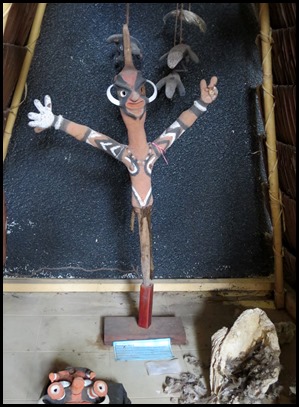 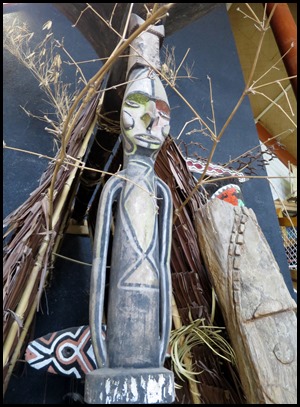 Edgar beat out the death notice on
this tamtam whose name is Atingtin Kilan. Only high
chiefs from north Ambrym know how to carve this very tall tamtam. It once
belonged to Chief Tofor of Fanla village who held the rank of Fenpi. He sold it
to the Cultural Museum and it was paid for by the French Government in August
1997. Edgar told us that on Pentecost Island the body of a relative was placed
in his hut for one hundred days. Yes, when asked it does smell. A tamtam at the
doorway is coloured with ash to signify the death inside the hut and indoors
shells, spirit effigies and family members keep the body company. The widow of a
dead man must not wash for three months, cover her face with ash, the sign of
mourning, not wash up and generally allow herself to be consumed by grief. At
the end of the three months she can wash, rid herself of her odorous belongings
and begin dating. The body or what is left of it, will be buried on day one
hundred, the widow can choose to keep the skull. At the one year anniversary she
may put ash on the back of her neck in remembrance of her loved one.
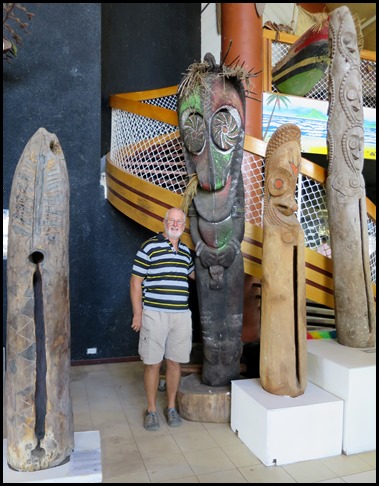 We admired other tamtams in the collection.
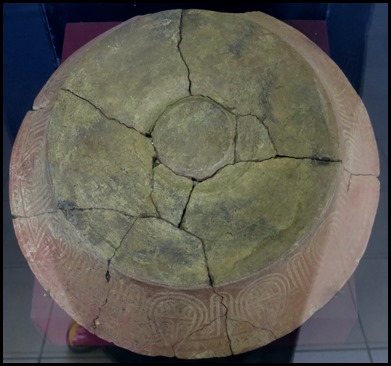 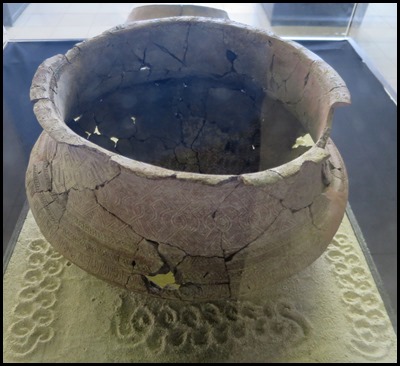 Looked at some incredibly old [about
three thousand years old] Lapita
pottery.
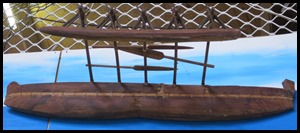 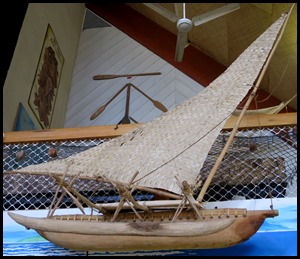 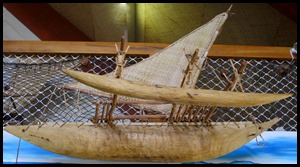 We compared the different shapes of canoe from various islands.
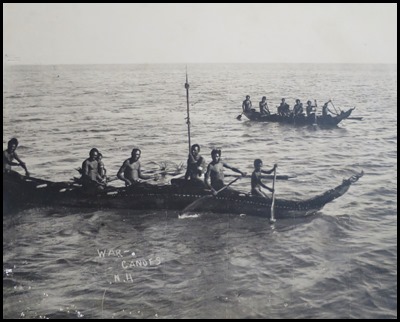 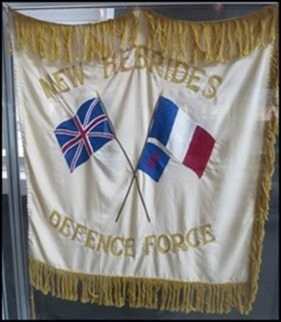 We bimbled by the war memorabilia.
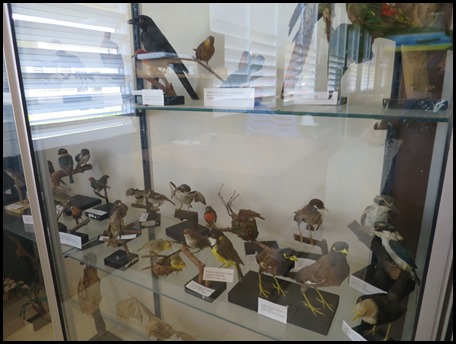 Stuffed birds.
We were riveted for hours, now time to wend our way.
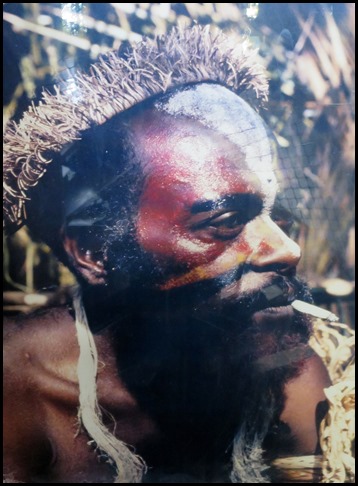 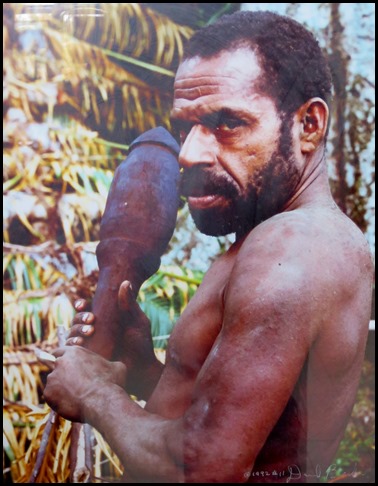 .
ALL IN ALL A LITTLE
TREASURE
LOTS OF INTERESTING INFORMATION
|